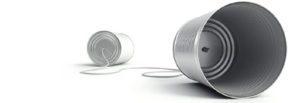How to Make Sure Your Event Emails Don’t Get Marked as Spam
 When social media first started to make its impact in the events industry, many felt that email would no longer be the marketing powerhouse it once was. But we are now in 2016, and email marketing is as strong as it ever has been. In fact, it remains a top priority for organisations with nearly 72% planning to spend more time on email production and more than 80% reporting to increase their email marketing budgets over the next year1.
When social media first started to make its impact in the events industry, many felt that email would no longer be the marketing powerhouse it once was. But we are now in 2016, and email marketing is as strong as it ever has been. In fact, it remains a top priority for organisations with nearly 72% planning to spend more time on email production and more than 80% reporting to increase their email marketing budgets over the next year1.
Like it or not, emails still remain the most effective marketing tool for your events today. It lets you reach out beyond the constraints of your event website or app and into your delegates’ personal space. It is also a very controlled experience where you, as the event planner, can decide everything from what it looks like, what time it shows up, the call to action and what kind of personalised content to use. More importantly, it is measurable. You can analyse things like open and click-through rates and measure each campaign for its effectiveness.
But with more than 20 percent of legitimate marketing emails never reaching the recipient’s inbox, what steps should event planners take to ensure the successful delivery of their email campaigns? In 2015, spam messages accounted for 53% of email traffic worldwide2 and as a result, email providers have raised the standards for filtering which emails are sent to junk mail folders.
Your delegates’ mail servers and applications use different ways of ‘scoring’ each mail – if the score is too high, then your email invitation, for example, will be classified as spam and may not be delivered to your delegate. The problem is that each spam filter works a bit differently and ‘passing’ scores can vary. Your email invitation could pass through one delegate’s spam filter, but get flagged by another’s as junk. Spam filters can sometimes even synch up with each other to share what they’ve learned and this will also affect the variability of your spam score.
Unfortunately, there is no fool-proof formula in addressing this as filtering criteria is constantly growing and changing. There are, however, some basic steps you can take that will help you reduce your email spam score:
Check Your Email Settings & Configuration 
Your delegate email servers are likely to reject your event emails when the address of your sending server doesn’t match the sender address on the email. So you may be using your registration software’s mail server (eg. info@eventtech.com) to send out your email invitations but the ‘sender’ address on the email that appears in your delegate’s inbox is registrations@myevent.com.
To solve this problem, contact the person or organisation that manages your domain – in this case, myevent.com – and ask them to add ‘eventtech.com’ to the SPF record (Sender Policy Framework) for that domain. This tells your delegates’ servers that eventech.com is allowed to send emails on your behalf.
Want to be a tech savvy event planner? Sign up to the weekly EventTech Talk newsletter here and get weekly updates on the latest technology trends, discussions and debates shaping the events industry today.
Whitelisting
It is possible to stop emails being rejected by your delegates’ servers by adding your mail server to a ‘whitelist’ on their servers. This can help if you are targeting individuals from one particular organisation (internal employees) or those delegates using public mailbox providers, such as Gmail or Yahoo Mail. The process, however, does require making changes to email servers that are normally outside your control. It also stops working if the address of your sending server ever changes.
Do You Have a Good Sender Reputation?
The delivery rate of the email marketing campaigns you do around your events relies heavily on your sender reputation. Internet Service Providers (ISPs) consider sender reputation as the most important factor in determining whether or not to block certain emails. It’s something you need to keep a constant eye on as it can fluctuate from one email campaign to another. Make sure you have a double opt-in strategy to ensure your delegate list is healthy and engaged, with clear unsubscribe links which will dramatically reduce any spam complaints. There are websites than can help you measure and monitor your sender reputation, like Sender Score and SenderBase3.
Avoid Purchased and Rented Delegate Lists 
As tempting as it is to grow the potential delegate list for your event, purchased lists are not best practice when it comes to sender reputation. More often than not, they are riddled with dead emails and spam traps, which can mislead mailbox providers that you break the rules by sending unsolicited emails. Your emails will end up in junk folders or you may be branded as a spammer.
Sending to a list that hasn’t given you permission can also impact your ability to market your event, potentially damage your brand and even have legal implications. Instead, allow your delegate list to grow organically. Give delegates the option to sign-up to your list when they register for an event – this way, you can ensure that they get all email communications from your organisation for all your events.
Don’t Forget: Content is King
Spam filters look into your email content. An email containing only a clickable link that takes your delegate to the event registration page, for example, is likely to be marked as spam. Adding some descriptive text to your email will help to avoid this. Make sure you have informative content about your event and try to limit the use of what these filters consider as risky words, such as ‘free’, ‘buy’, ‘order’, ‘purchase’ and ‘promo’. Also, do not capitalise your ‘from’ address or subject line and generally avoid using capitalisation and exclamation marks in the body of your email message, as these will all have a negative impact on your spam score.
Read: Top Subject Lines For Your Event Email Campaigns
Balance your image-to-text ratio – Mail Chimp recommends a ratio of 80% text to 20% images. Emails with lots of images or large images and not much text will get a high spam score. Avoid linking to images that are held on another sever as you’re better off uploading pictures into the email itself. If you are going to use links, make sure your images are hosted at credible services only as this will also have a negative impact on your spam score.
Check Your ‘From’ Details
Your delegates’ mail servers check more than your domain and content, with some putting particular attention to your ‘From’ address. Try and avoid frequent changes to your ‘from’ address as this will impact your spam score. When sending invitation emails for your events, ask your delegates to add your ‘From’ address to their address books. This way you can avoid all future email communications with that delegate from ending up in the spam folder.
Lastly, try and avoid using vague field names in your address, such as ‘noreply@myevents.com’. Instead, use clear, trustworthy names such as ‘registrations@myevents.com’ or ‘contact@myevents.com’. Stick to a limited number of these names and build a good reputation for these addresses by sending engaging emails and you will notice a difference.
Test Your Email ‘Spamminess’
Brandon Checketts have a tool which can be used to test the ‘spamminess’ of your email content and the configuration of your account. You can try this for yourself here.
Written by Lynda Browne, Client Loyalty Manager, Eventsforce
If you would like to learn more about what Eventsforce has to offer, take a look at a few other blog posts listed below or get in contact with out friendly team.
Call us on 0207 785 6997 or get in touch here.
